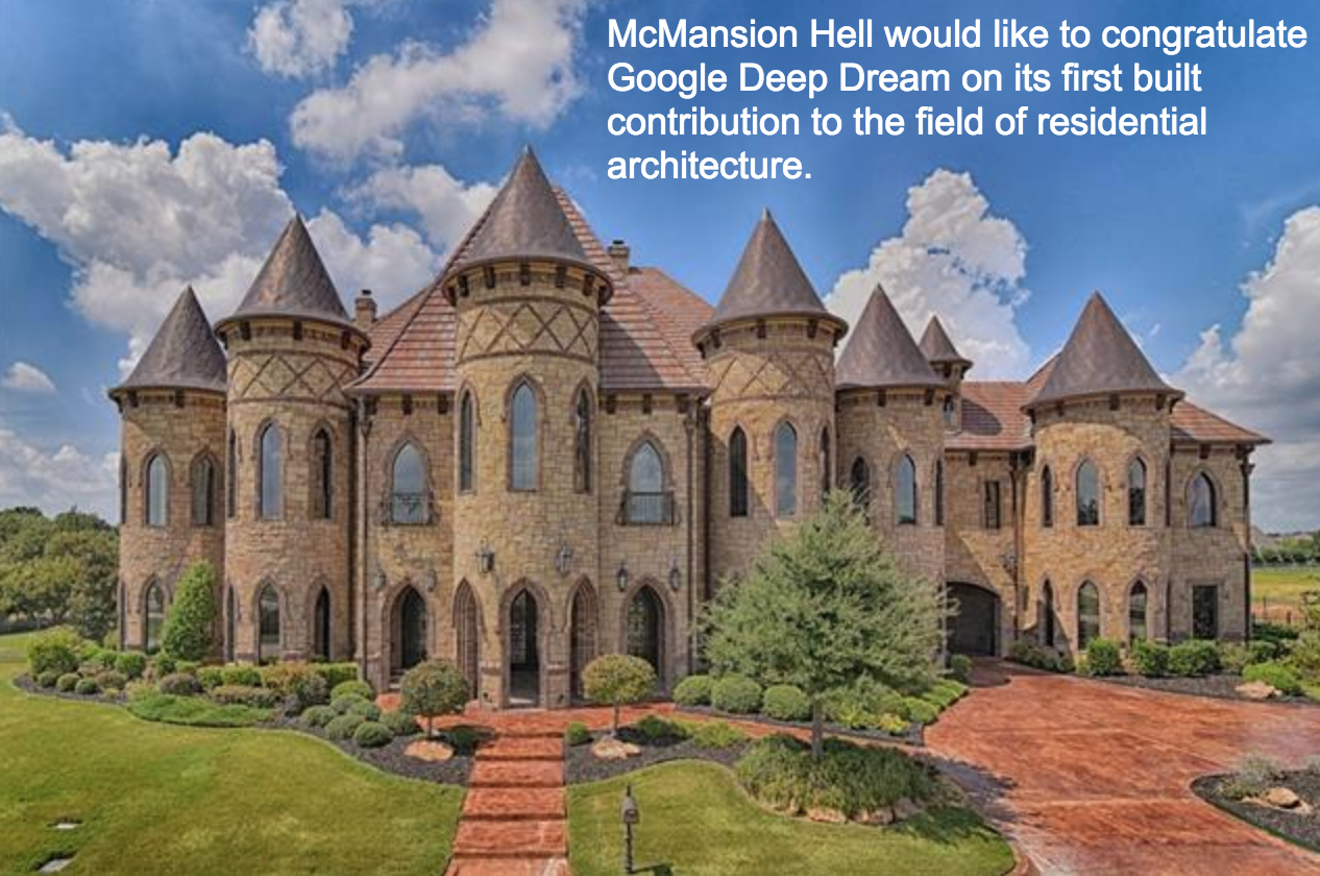A thing of beauty is a joy forever, but affronts to architectural pulchritude live in infamy on Kate Wagner’s blog McMansionhell.com.
McMansion Hell highlights a certain type of enormous, aesthetically baffling dwelling constructed across the country in recent decades. Wagner wants to unveil the worst offending home in Texas, her home state, this week, through a contest in which voters select from 16 qualifiers, winnowed down from 2,000 submissions. Two contenders have taken the lead, a sprawling meltdown appealingly dubbed Smallpox Estates and a literal castle called Clone Wars.
But what exactly is a McMansion? It’s not just a very large house, Wagner explains.
“It’s also poorly constructed and poorly designed,” Wagner says. “It’s a hodgepodge of several different architectural styles, lots of different extruding masses, windows that don’t match. It really looks like everything has been put together in a cobbled way.”
Though the genre gained steam in the 1980s to 2000s, it cannot necessarily be explained by the ballooning of the 1 percent, as wealth has always had connections to grand buildings. Rather, it reflects a historic shift in the role wealth can play in architecture. McMansion owners frequently take over design, going wild with customization and trends. A column here and a turret there, and architectural harmony goes out 14 ill-sized circular windows.
“Frankly it’s just disappointing, because throughout the history of architecture, wealthy people have always employed architects to further their craft,” Wagner says. “The lineage of famous houses and the lineage of residential architecture comes from wealthy patronage, and that doesn’t happen anymore. Instead of hiring an architect to design a house that will be timeless, it’s following the trend. It’s basically an architectural expression of hyper-consumerism.”
The homes fascinate Wagner, who has covered them for three years. For her, McMansions proved problematic for reasons beyond ostentation and aesthetics.
“First of all they’re so wasteful,” Wagner says. “They waste so much energy and resources, partially from commuting. The whole thing is so bad for the environment.”
They also have an aesthetic connection to the political moment, sharing historical roots with President Donald Trump’s properties, which are defined by gilding and grandeur. Both grew out of the aesthetic palette of the '80s with its huge interior volumes, plush fabrics and golden décor. Both make aesthetic choices primarily to communicate wealth rather than for the sake of architecture or design, Wagner says.“They waste so much energy and resources, partially from commuting. The whole thing is so bad for the environment.” – Kate Wagner
tweet this
Texas is particularly conducive to this kind of opulence. The ubiquitous phrase “everything is bigger” holds true for even the state’s McMansions, Wagner says. Spaciousness and relatively inexpensive land have given rise to the largest homes she has seen.
Stylistically, the Texas brand of McMansion tends toward the pseudo-Mediterranean, she noticed while running the contest, and borrows from Italy and Spanish Colonial eras, popular in the 19th century, adding in a touch of Alamo or mission aesthetic. She saw an eyeful of fake stucco, turrets and brackets.
What Wagner did not expect to see was so little of the quintessentially Texan style she actually endorses, with nostalgia for the 10-gallon hats and giant paintings of galloping horses she remembers from childhood. The homes she visited over the course of the competition instead displayed a sort of anonymity and rootlessness, unmoored from the surrounding culture.
“Usually that’s a big thing in Texas, like the red star in the outside, the Southwestern décor,” she says. “I think that’s part of the reason why it’s so sad. It’s not even anything that’s particularly culturally attached to Texas. It’s just like someone built a huge house that could have been built anywhere, and they built it in Texas.”
The results of the competition have completely surprised her, though. She expects the super castle Clone Wars to ultimately win, but believes Smallpox Estates, with its medical emergency impression, is worse from a design perspective.
“[Clone Wars] is a castle with fake turrets, which is stupid, but it has a cohesive design holding together. It definitely knows what aesthetic it wants to be,” Wagner says. “Whereas the other one, Smallpox Estates, is just ridiculous-looking. It totally looks like someone glued river rocks on the outside of the house.”
The McMansion movement has become such a force that it has begun to gather academic standing, now appearing as a chapter in many architectural history books. As long as homeowners unpracticed in design seek to control the creation of their unique dream home, however, Wagner will continue to have plenty to review.
(H/T D Magazine)












